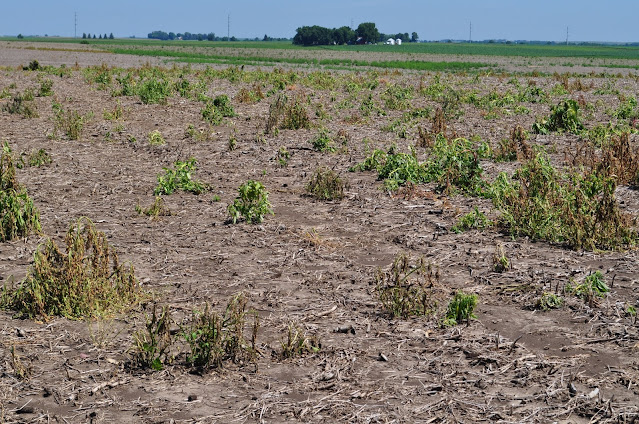 |
| Photo credit: Liz Stahl/University of Minnesota Extension |
By: Dan Kaiser, Extension nutrient management specialist & Anna Cates, Extension soil health specialist
While the 2020 growing season was relatively to abnormally dry for much of Minnesota, there were pockets of the state where fields were too wet for crops to be harvested. Fallowed fields can present challenges to some crops through a process called “fallow syndrome.”
Fallow syndrome can cause issues for corn, which depends on vesicular arbuscular mycorrhizae (VAM) to help the plant uptake nutrients and water. Corn grown following a fallowed field can result in a lack of VAM colonization, which can reduce phosphorus (P) and zinc in the soil. A previous post from 2020 focused on how to prevent fallow syndrome in corn.
Identifying risks for fallow syndrome
Before talking about prevention, it is important to evaluate your field for risk of fallow syndrome. Fallow syndrome generally occurs when a field is either fallowed, the field is left bare for most of the year, or a crop species that is a VAM non-host crop was grown the previous year.There are several cover crop species in the brassica family that are non-host crops for VAM. Common brassica cover crops include turnip, radish, kale, mustard, canola, and camelina. If any of these species were grown in the field as a pure stand, you may want to consider changing management this spring to limit the risk potential for fallow syndrome in your field.
On the other hand, cover crop species such as rye and oat are host crops for VAM, so the risk for fallow syndrome will be low if these species were grown. Many grasses and weed species are also hosts for VAM. While we do not suggest allowing weeds to grow in fallow fields, if weeds were present in a field in a prevent plant situation, the likelihood that fallow syndrome will show up is low.
Preventing fallow syndrome
The main issue with fallow syndrome is that it needs to be dealt with before the crop emerges from the ground. If you are planting corn, application of fertilizer containing P, and possibly zinc, is essential when fallow syndrome is likely. However, one caution is that higher rates of liquid starter fertilizer placed near the seed can be damaging to seedlings as they are emerging, and this can be worse when soils are dry.The best source of liquid fertilizer is one that has a high concentration of P2O5, so you can apply a lower rate and still get a substantial amount of P applied. Corn will be a bigger issue this spring for those trying to up their starter fertilizer rate to supply more P, especially if soils are dry. Remember, no rate of fertilizer placed on the seed is 100% safe. I would not suggest increasing starter rates in medium- to coarse-textured soils this spring due to a greater risk for seedling damage.
When deciding what to do, make sure you take all factors into account. The first question to ask is, “am I at risk for fallow syndrome?” Considering some of the information above should help you make an informed decision on what to do this spring.
---
For the latest nutrient management information, subscribe to Minnesota Crop News email alerts, like UMN Extension Nutrient Management on Facebook, follow us on Twitter, and visit our website.
Support for Minnesota Crop News nutrient management blog posts is provided in part by the Agricultural Fertilizer Research & Education Council (AFREC).
Comments
Post a Comment